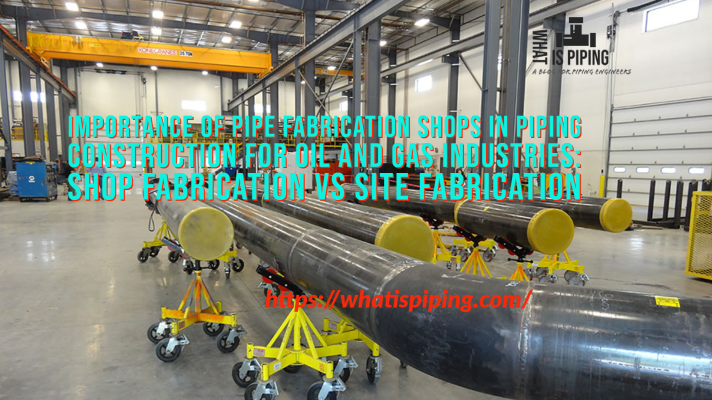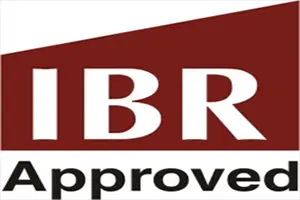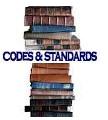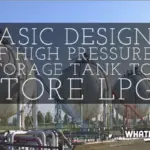In the context of pressure vessels and piping in Canada, the registration number refers to the unique identifier assigned to pressure vessels and piping systems that meet specific regulatory requirements. These requirements are outlined in the applicable codes and standards, such as the Canadian Standards Association (CSA) B51 standard for pressure vessels and the CSA B52 standard for boilers, pressure vessels, and piping.
The Canadian registration number or CRN is issued by the regulatory authority responsible for overseeing the design, fabrication, installation, and operation of pressure vessels and piping systems. In Canada, this authority varies depending on the province or territory.
For example, in Ontario, the Technical Standards and Safety Authority (TSSA) is responsible for regulating and enforcing safety standards for pressure vessels and piping systems. They issue a registration number, often referred to as a CRN (Canadian Registration Number), for compliant pressure vessels and piping installations. Other provinces and territories have their own regulatory bodies with similar processes.
The CRN is typically a unique combination of letters and numbers assigned to each specific pressure vessel or piping system design that has been reviewed and approved by the regulatory authority. It serves as a form of identification, indicating that the design and construction of the pressure vessel or piping system comply with the applicable codes and standards.
Significance of CRN Numbers
The registration number is important because it demonstrates that the pressure vessel or piping system meets the necessary safety requirements, and it may be required for legal and regulatory compliance. It also provides a means of tracking and monitoring the installations throughout their lifecycle.
The Canadian Registration Number (CRN) holds several significant implications in the context of pressure vessels and piping systems in Canada. Here are some of the key significance of CRNs:
- Compliance Verification: The CRN serves as evidence that a pressure vessel or piping system design has been reviewed and approved by the regulatory authority. It indicates that the design meets the applicable codes and standards, ensuring compliance with safety requirements.
- Legal and Regulatory Compliance: Many provinces and territories in Canada require pressure vessels and piping systems to have a CRN for installation and operation. Without a valid CRN, it may be unlawful to operate or install such equipment.
- Safety Assurance: The CRN signifies that the pressure vessel or piping system has undergone a thorough review of its design, fabrication, and installation, with a focus on safety. It provides confidence that the equipment meets recognized safety standards and regulations.
- Interprovincial Recognition: The CRN is recognized across all Canadian provinces and territories. It allows for the free movement of pressure vessels and piping systems between jurisdictions without requiring additional reviews or inspections.
- Traceability and Accountability: Each CRN is unique to a specific design and installation. It facilitates tracking and monitoring throughout the equipment’s lifecycle, enabling regulatory authorities to identify and address potential safety concerns.
- Quality Assurance: The CRN process promotes quality assurance by ensuring that pressure vessels and piping systems are designed and manufactured according to established standards. This helps to minimize the risk of failures, accidents, and injuries.
Vessel CRN Numbers
Vessel registration numbers are usually based on the format suggested by CSA B51-14 4.3.2. However, the format of vessel CRN (Canadian Registration Number) can vary based on the jurisdiction and the specific regulatory authority issuing the number. However, there are some common characteristics and patterns typically found in CRN numbers.
Pressure Vessel CRN numbers often consist of a combination of letters and numbers. The general format starts with an initial letter which is followed by 3 to 5-digit numbers. Next, there is a decimal point followed by up to 10 digits and three letters. The first digit after the decimal point specifies the province of first registration. The usual identifiers are:
- 1 – British Columbia;
- 2 – Alberta;
- 3 – Saskatchewan;
- 4 – Manitoba;
- 5 – Ontario;
- 6 – Quebec;
- 7 – New Brunswick;
- 8 – Nova Scotia;
- 9 – Prince Edward Island;
- 0 (zero) – Newfoundland;
- T – Northwest Territories;
- Y – Yukon Territory;
- N – Nunavut
There could be additional digits thereafter to indicate other provinces that accept the same design. Typical examples are K2478.15, A2170.8, etc. Refer to Fig. 1 below that explains the Pressure Vessel CRN Number Format.

Fitting CRN Numbers
Fittings are registered in individual categories. The CRN format for pipe fittings consists of a zero followed by the category letter, three to five digits. Then there is a decimal point followed by up to 190 digits and three letters similar to the pressure vessel. For each type of pipe fittings, there is a specific category and those are defined as follows:
- A – pipe fittings like elbow, tee, plugs, unions, caps, couplings, reducers, etc
- B – all pipe flanges
- C – all line valves
- D – all types of expansion joints, flexible connections, and hose assemblies
- E – strainers, filters, separators, and steam traps
- F – measuring devices like level gauge, pressure gauge, level transmitter, sight glass, pressure transmitter, etc
- G – certified capacity-rated pressure relief devices
- H – pressure-retaining components that do not fall into any of the above-mentioned categories
The three to five digits that follow the category letter are part of a sequential numbering system used by the issuing province or territory. Typical examples of Fitting CRN numbers are: 0A5983.1, 0C07555.2C, 0B09081.2CL
Safety Authorities Associated with Canadian Registration Number (CRN)
In Canada, the safety authorities associated with CRN (Canadian Registration Number) vary based on the province or territory in which the pressure vessel or piping system is located. Each province or territory has its own regulatory authority responsible for overseeing the design, fabrication, installation, and operation of pressure vessels and piping systems. Here are some of the prominent safety authorities associated with CRN in different regions:
- Alberta: Alberta Boilers Safety Association (ABSA)
- British Columbia: Technical Safety BC
- Manitoba: Office of the Fire Commissioner (OFC)
- New Brunswick: WorkSafeNB
- Newfoundland and Labrador: Service NL
- Nova Scotia: Nova Scotia Department of Labour and Advanced Education
- Ontario: Technical Standards and Safety Authority (TSSA)
- Prince Edward Island: Workers Compensation Board of Prince Edward Island (WCB PEI)
- Quebec: Régie du bâtiment du Québec (RBQ)
- Saskatchewan: Saskatchewan Boiler and Pressure Vessel Safety Association (SBPVSA)
Steps for Getting CRN Number
To get a CRN (Canadian Registration Number) for a specific pipe or pressure vessel, you will need to follow these general steps:
- Determine the Jurisdiction: Identify the province or territory in Canada where the pipe or pressure vessel is installed or will be installed. Each province or territory has its own regulatory authority responsible for issuing CRNs.
- Contact the Regulatory Authority: Once you know the jurisdiction, reach out to the relevant regulatory authority that oversees pressure vessel and piping system registrations in that province or territory. They will provide you with specific information and guidance on obtaining a CRN.
- Provide Necessary Information: The regulatory authority will likely require certain details about the pipe or pressure vessel. This may include technical specifications, engineering drawings, fabrication information, and other relevant documentation.
- Submit the Application: Complete the application form provided by the regulatory authority, providing all the required information about the pipe or pressure vessel. Ensure that the application is accurate and comprehensive to expedite the review process.
- Review and Approval Process: The regulatory authority will review the submitted information to verify compliance with applicable codes and standards. They may conduct inspections or request additional information if necessary.
- CRN Issuance: Upon successful review and approval, the regulatory authority will issue a CRN for the specific pipe or pressure vessel design. The CRN will serve as proof of compliance and registration.
Remember that the process and requirements for obtaining a CRN can vary between provinces and territories in Canada. It is essential to contact the appropriate regulatory authority directly for the most accurate and up-to-date information specific to your location and circumstances.
Differences between CRN and CSA
Below is a tabular format outlining the key differences between CRN (Canadian Registration Number) and CSA (Canadian Standards Association):
| CRN (Canadian Registration Number) | CSA (Canadian Standards Association) |
|---|---|
| Unique identifier for registered pressure vessels and piping systems in Canada. | Non-profit organization that develops and publishes standards and codes for various industries in Canada. |
| Assigned by provincial or territorial regulatory authorities in Canada. | Develops standards and codes in collaboration with industry experts and stakeholders. |
| Verifies compliance of pressure vessel and piping system designs with applicable codes and standards. | Establishes and maintains technical standards and guidelines for various sectors, including construction, manufacturing, electrical, and more. |
| Indicates that the design and construction of the pressure vessel or piping system meet safety requirements. | Ensures that products, systems, and services comply with recognized standards for quality, safety, and performance. |
| A non-profit organization that develops and publishes standards and codes for various industries in Canada. | Provides guidance and best practices to industries, helping to improve safety, efficiency, and interoperability. |
| Allows for the free movement of pressure vessels and piping systems between Canadian provinces and territories. | Works with international standards organizations to harmonize standards and facilitate international trade. |
| Provides traceability and accountability for pressure vessel and piping system installations. | Offers certification programs to demonstrate compliance with specific standards, enhancing marketability and credibility. |
It’s important to note that CRN and CSA serve different purposes within the regulatory framework and standards development in Canada. CRN is specific to pressure vessels and piping systems, while CSA focuses on developing a wide range of standards across various industries.









Dear Sir,
We are interested in learning more about the process of obtaining a CRN, and would appreciate it if you could provide us with some information.
Specifically, we would like to know the following:
What are the requirements for obtaining a CRN?
What is the application process?
What is the typical turnaround time for processing a CRN application?
Are there any associated costs?
We would also appreciate any other information you can provide about the CRN process.
Thank you for your time and consideration